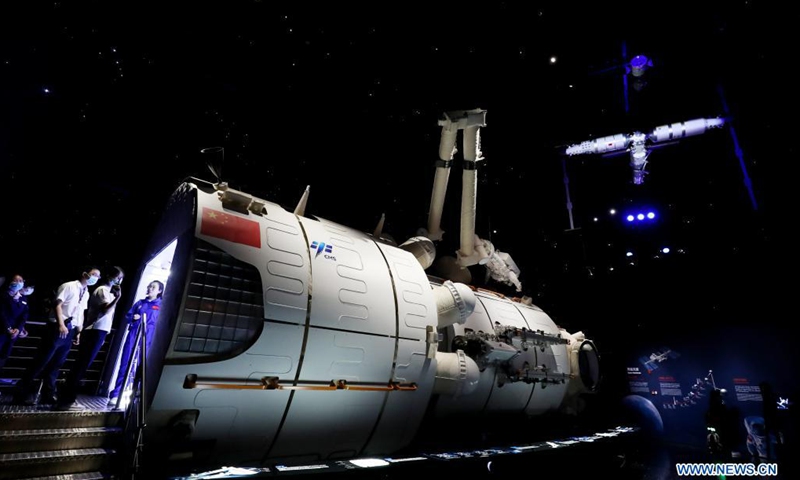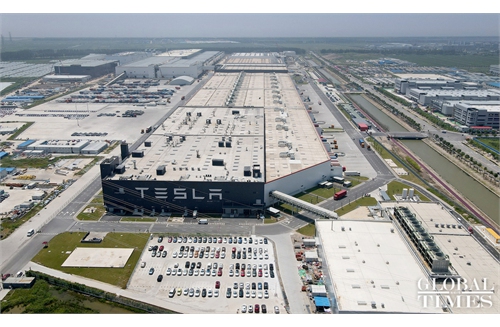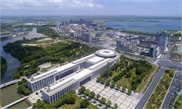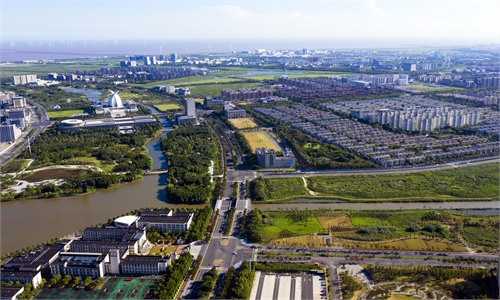
Photo shows the model of China's space station core module Tianhe displayed in Shanghai Astronomy Museum in East China's Shanghai, July 5, 2021. The museum is located in the China (Shanghai) Pilot Free Trade Zone Lingang Special Area. It is a branch of the Shanghai Science and Technology Museum.(Photo: Xinhua)
The Lingang Special Area of China (Shanghai) Pilot Free Trade Zone (FTZ) aims to become an epicenter of new-energy vehicles (NEVs), integrated circuits (ICs) and high-end equipment manufacturing by 2025, when its gross regional product will double the 2018 level, the Shanghai government said on Thursday.
The vision is part of the municipality's five-year development plan for Lingang, where the local government envisioned a special economic area that's influential and competitive in the global marketplace.
The area, home to Tesla's Gigafactory Shanghai, would take the lead in making breakthroughs in multiple key areas and exemplify the country's deep integration into economic globalization system, read a notice posted on the website of the Shanghai government.
With a new round of policy and institutional supplies in the pipeline, the area is poised to capitalize on opportunities that result from the signing of the Regional Comprehensive Economic Partnership and serve as a testing ground for building up a more open economy, the notice said.
By 2025, the gross regional product is likely to double from its 2018 reading, suggesting an annual average growth rate of about 25 percent. In addition to plans to nurture three giant industrial clusters for NEVs, ICs and high-end equipment manufacturing worth 100 billion yuan ($15.44 billion) apiece, Lingang plans more investments in biopharmaceuticals, artificial intelligence and civil aviation.
The area will also devote more resources into cross-border financial services, modern shipping services and digital information services.
At least 10 top scientific laboratories will be set up in Ligang, with at least 100 top-caliber experts brought into the area. The addition of high-tech firms will hit about 1,000.
Lingang was launched in August 2019, roughly six years after the launch of the Shanghai FTZ. It's located in southeast Shanghai, with Pudong International Airport to its north and Yangshan International Port to its south.
Last year, the region's industrial output totaled 170.3 billion yuan while its fixed-asset investment hit 61.82 billion yuan.
Global Times



